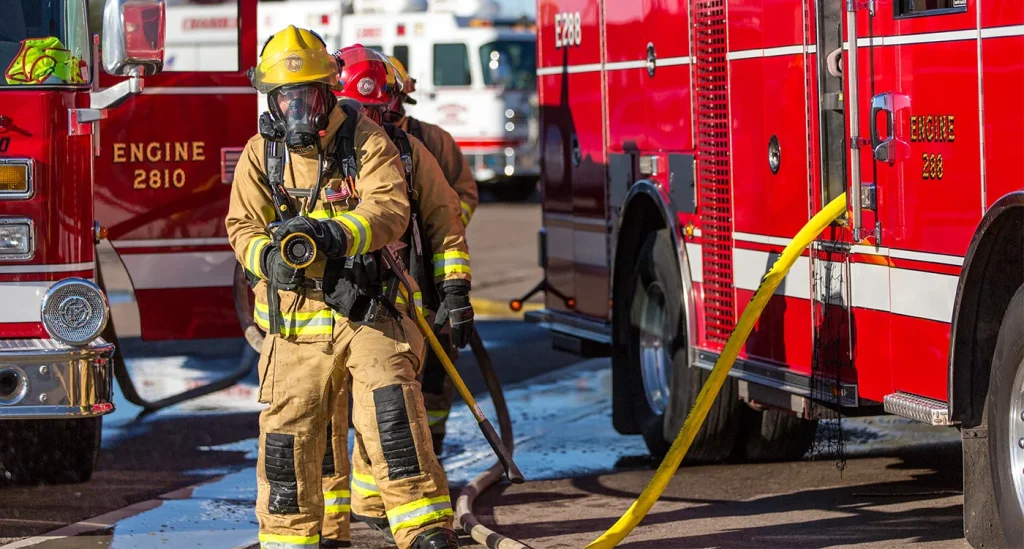Old turnout gear doesn’t magically repel new hazards, and yesterday’s apparatus can’t always keep up with today’s call volume. Yet most municipal budgets still creak like a ’78 pumper. Below are practical, field-tested ways to upgrade gear without torching the ledger.
1. Grab the Low-Hanging Federal Cash
The Assistance to Firefighters Grant (AFG) still dishes out hundreds of millions each cycle ($291.6 million in FY 2024) for PPE, SCBA, radios, and apparatus. Its online checklist makes it painfully clear which projects FEMA will actually fund—start there, or risk scoring “priority-zero.” (IAFF)
Pro tip: Cross-check your wish list against FEMA’s Authorized Equipment List before you write a single sentence of narrative; non-approved goodies go straight to the rejection pile. (FEMA)
2. Treat Funding Like a Layered PPE System
FEMA’s Funding Alternatives for EMS & Fire Services manual reads like a 200-page buffet of money ideas: local benefit assessments, impact fees, bonds, even subscription models (think “Netflix for fire protection”). Mix and match several streams so no single source has to cover the whole bill. (U.S. Fire Administration)
3. Steal—uh, “Adopt”—Military Efficiency Standards
The Navy’s Fire & Emergency Services Program mandates uniform specs and lifecycle management for every engine, ladder, and rescue truck worldwide. The result: cheaper parts, easier training, and predictable replacement schedules. Municipal chiefs can borrow the same playbook—standardize specs region-wide and tell vendors to sharpen their pencils. (secnav.navy.mil)
4. Buy in Bulk, Together
Regional cooperative purchasing pools (county-wide or multi-city) turn five single-station orders into one fleet-size bid, trimming 10–15 % off sticker prices and cutting delivery lead times. If neighboring departments run the same chassis and pump packages, mutual-aid operations—and maintenance swaps—get way simpler.
5. Chase Total Cost of Ownership, Not Sticker Shock
A used Type 3 that guzzles parts is no bargain. Build replacement plans around life-cycle cost: acquisition + fuel + maintenance + downtime. Present councils with the long-view math; most will choose the cheaper-in-the-long-run option once the spreadsheet does the talking.
6. Phase, Refurbish, Rotate
Can’t afford a fleet swap? Rotate frontline rigs to reserve status, refurbish mid-life apparatus (new pump, LED lighting, telemetry), and replace only the truly obsolete units this fiscal year. Combine that with a multi-year capital plan so elected officials aren’t blindsided when the ladder truck finally expires.
7. Show the ROI in Lives and Liability
NFPA’s own needs assessments tie outdated gear to higher injury rates and slower knock-down times—numbers city attorneys understand. Bundle safety metrics with insurance premium savings and reduced workers-comp claims to frame modernization as risk mitigation rather than a “nice-to-have.” (U.S. Fire Administration)
8. Tap Private-Sector Partnerships
Local industry often has skin in the game (and CSR budgets). A refinery or data-center operator may co-fund haz-mat or ARFF upgrades that directly protect their assets. Craft MOUs so donated equipment meets the same standards and maintenance cycles as city-owned gear.
9. Leverage Data—Then Share It
Track out-of-service hours, repair invoices, and response gaps before and after upgrades. Publish the results on RateMyDepartment.com so crews everywhere can see which funding tactics and vendors actually deliver. Public transparency nudges governing boards to keep the capital plan alive.
Bottom line: Modern gear isn’t a luxury; it’s a safety mandate. Blend federal grants, layered local revenues, military-grade standardization, and ruthless cost-of-ownership math to get there without blowing the budget—or gambling with firefighter lives. We’d love to hear your thoughts, leave a comment below! RateMyDepartment.com


